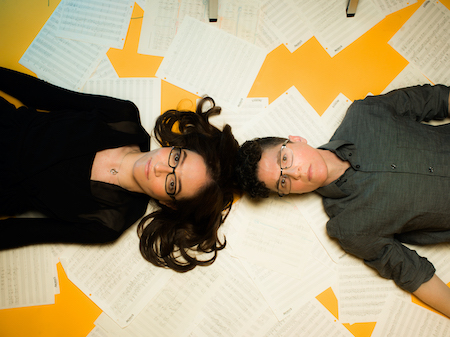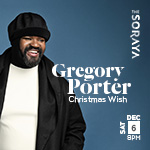Oct 28, 2025 10:47 AM
In Memoriam: Jack DeJohnette, 1942–2025
Jack DeJohnette, a bold and resourceful drummer and NEA Jazz Master who forged a unique vocabulary on the kit over his…

A new breed of New York-based contemporary jazz composers that includes Erica Seguine (left) and Shon Baker is reinventing orchestral music for the 21st century.
(Photo: Desmond White)Unlike the retro swing revival of the 1990s, the current incarnation emerged from conservatories, not bandstands and ballroom dance floors. But it’s drawing enthusiasts to small clubs where young players magically stretch time and space. Who’s in the vanguard? For starters, the Erica Seguine/Shon Baker Orchestra, whose stunning debut is evocatively titled The New Day Bends Light.
“Each composition on this album is an inner world we invite you to immerse yourself in,” the co-founders wrote in a mission statement. It’s a vision they’ve shared since 2011, when they first collaborated for their graduate music department recital at William Paterson University. In the ensuing years, they’ve become key players in New York’s vibrant community of young jazz composers like Secret Society’s Darcy James Argue, who produced their album.
Over a Zoom call, Seguine and Baker logged on from their respective homes in Bushwick, Brooklyn, and Boonton, New Jersey, for a lively conversation. Here are a few highlights.
Cree McCree: “Reel,” the joyous Celtic opener that you wrote, Erica, uses instruments rarely associated with jazz. What’s the backstory on that?
Erica Seguine: Years ago in North Carolina, I met a guy who handcrafts hammered dulcimers in a store called Song of the Wood and fell in love with the instrument. So I started learning some Celtic tunes, studied with a clarinetist who also plays tin whistle and decided to write a reel of my own.
McCree: What makes your music jazz as opposed to modern classical orchestral?
Shon Baker: An improvisational component. It’s composed, but within every piece there’s usually some improv.
Seguine: I’ve never been a huge fan of genre boundaries. But we are very orchestral, and there’s a lot of classical influences as well. And Shon’s music is very cinematic.
McCree: What’s the biggest hurdle big-band jazz composers face?
Seguine: Unfortunately, in the jazz world, people who are primarily composers are also expected to be a performer. In the classical world, you can just be a composer. You don’t have to be the first violinist. That’s one reason I started conducting music: to get my music played. I love conducting music, and I was lucky that I found something that I feel is just as much my calling as composing. Now I get asked to conduct a lot of other big bands. But that’s not the case with everyone. I wish people really respected how much time it takes to write a piece of music. How much beauty there is in that. We don’t ask musicians to compose all the music they play. So why do we ask composers to become professional performers to get their music played? DB

Jack DeJohnette boasted a musical resume that was as long as it was fearsome.
Oct 28, 2025 10:47 AM
Jack DeJohnette, a bold and resourceful drummer and NEA Jazz Master who forged a unique vocabulary on the kit over his…

D’Angelo achieved commercial and critical success experimenting with a fusion of jazz, funk, soul, R&B and hip-hop.
Oct 14, 2025 1:47 PM
D’Angelo, a Grammy-winning R&B and neo-soul singer, guitarist and pianist who exerted a profound influence on 21st…

Jim McNeely’s singular body of work had a profound and lasting influence on many of today’s top jazz composers in the U.S. and in Europe.
Oct 7, 2025 3:40 PM
Pianist Jim McNeely, one of the most distinguished large ensemble jazz composers of his generation, died Sept. 26 at…

To see the complete list of nominations for the 2026 Grammy Awards, go to grammy.com.
Nov 11, 2025 12:35 PM
The nominations for the 2026 Grammy Awards are in, with plenty to smile about for the worlds of jazz, blues and beyond.…

Drummond was cherished by generations of mainstream jazz listeners and bandleaders for his authoritative tonal presence, a defining quality of his style most apparent when he played his instrument unamplified.
Nov 4, 2025 11:39 AM
Ray Drummond, a first-call bassist who appeared on hundreds of albums as a sideman for some of the top names in jazz…






